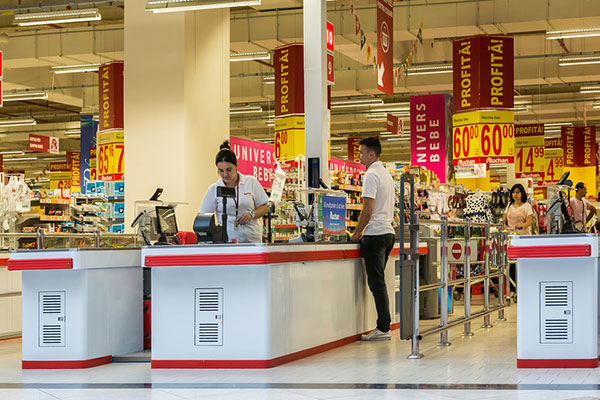
US consumer spending rose more than expected
in June as households bought goods and services.
US consumer spending sees strong momentum
WASHINGTON, August 3, 2016
US consumer spending rose more than expected in June as households bought goods and services, suggesting strength that appeared to be sustained early in the third quarter with auto sales surging to an eight-month high in July.
Despite healthy consumer spending, Tuesday's report from the Commerce Department showed inflation still muted. Economists say this, together with weak business investment and the second quarter's anemic economic growth pace, could encourage a cautious Federal Reserve to keep interest rates at current low levels for a while.
"The continued buoyancy in consumption expenditures points to a favorable handoff to the third quarter, but the soft price pressures add to the narrative of the weakening inflationary backdrop, which will argue for caution at the Fed," said Millan Mulraine, deputy chief economist at TD Securities in New York.
Consumer spending, which accounts for more than two-thirds of US economic activity, increased 0.4 per cent in June after a similar gain in May. Economists polled by Reuters had forecast consumer spending advancing 0.3 per cent.
When adjusted for inflation, consumer spending rose 0.3 per cent after climbing 0.2 per cent in May.
The June data was included in last week's second-quarter gross domestic product report, which showed that consumer spending rose at a 4.2 per cent annual rate, the fastest in nearly two years. That jump accounted for almost all of the economy's 1.2 per cent growth pace during the period.
An inventory drawdown was behind the bulk of the economy's poor performance in the second quarter, with other drags coming from persistently weak business investment, as well as a decline in spending on residential construction and weak government outlays.
Separately, auto sales rose to a 17.88 million-unit annual rate last month, the highest since November 2015, from a 16.74 million-unit pace in June, according to data from Autodata. Analysts had expected sales to increase to a 17.3 million unit rate.
"As the earliest reliable indicator of durable goods consumption, today's sales results bode well for real July consumption growth," said Jesse Hurwitz, an economist at Barclays in New York.
The dollar fell against a basket of currencies. US Treasuries slipped and stocks on Wall Street ended down.
SOLID HANDOFF
While the second quarter's robust pace of consumer spending will probably not be repeated, economists are optimistic that spending will remain solid, underpinned by steadily increasing wages as the labor market tightens, as well as rising house and stock market prices.
The rebound in auto sales came despite General Motors Co reporting a 2 per cent drop. Ford Motor Co also reported a 3 per cent decline in sales last month.
"The solid handoff to the quarter suggests consumer spending will downshift only moderately in the third quarter, assisted by an expected rebound in unit auto sales in July," said Sal Guatieri, a senior economist at BMO Capital Markets in Toronto.
"Another decent quarter for consumers, together with renewed inventory building, should anchor a near doubling in real GDP growth in the third quarter."
There was little sign of inflation in June. The personal consumption expenditures (PCE) price index, excluding the volatile food and energy components, rose 0.1 per cent in June after a 0.2 per cent gain in May.
In the 12 months through June the core PCE increased 1.6 per cent. It has risen by the same margin since March. The core PCE is the Federal Reserve's preferred inflation measure and is running below the US central bank's 2 per cent target.
Consumer spending in June was lifted by a 0.7 per cent rise in purchases of non-durable goods. Spending on services increased 0.5 per cent, but outlays on long-lasting manufactured goods such as automobiles fell 0.3 per cent.
Spending increased despite personal income rising only 0.2 per cent in June after a similar gain in May. Wages and salaries advanced 0.3 per cent after rising 0.2 per cent in May. With spending outpacing income, savings fell to $732 billion, the lowest level since March 2015.
"The good news is that this still leaves at least some scope for households to draw on their savings in the second half of the year," said Steve Murphy, a US economist at Capital Economics in Toronto. – Reuters







